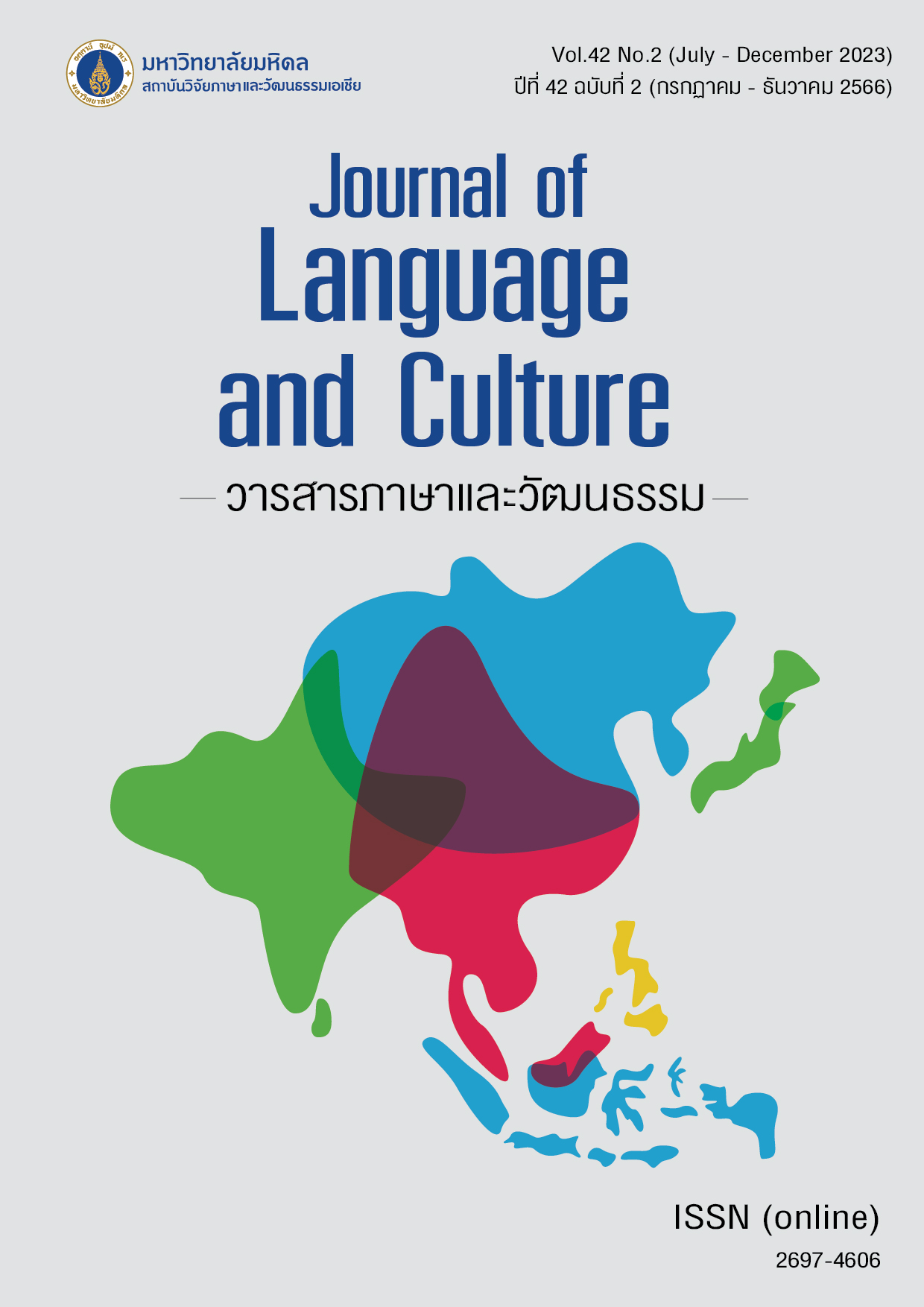Endangered Tibeto-Burman languages of Thailand
Main Article Content
Abstract
There are three endangered indigenous Tibeto-Burman languages of Thailand: Bisu (bzi), Mpi (mpz) and Gong (ugo). Bisu is spoken in Chiang Rai Province, Mpi in Phrae and Nan provinces, and Gong in Suphanburi and Uthai Thani provinces. All are Burmic languages: Bisu and Mpi are Southern Ngwi (Yi Branch, Loloish) languages and Gong is a Burmish language.
The history of Bisu and Mpi is known from traditional stories. The Mpi came from southwest Yunnan and served as elephant keepers for the Princes of Phrae from over 200 years ago; the Bisu came from Kengtung State in northeast Burma to the south of the Chiang Rai area about 170 years ago. Bisu is still spoken in two villages north of Kengtung and one village nearby in Yunnan; other closely-related languages include Laomian further north; also further east, Sangkong in Yunnan and Phunoi in Laos, also known as Côông in Vietnam. Bi-Ka Hani languages closely related to Mpi are spoken in south Pu’er Prefecture in south Yunnan, but no Mpi is spoken there. The Gong were in the Kanchanaburi area about 240 years ago, as tributaries to the restored Chakri Dynasty, under the name Lawáa; no Gong are now known outside Thailand. Until recently, the Bisu and Mpi were known in Northern Thai as Lua’, a collective name for small tribal groups which mainly refers to various small groups speaking Mon-Khmer languages; the Gong were also included in this category.
There have been various efforts for language documentation and maintenance with all three groups. The Bisu effort has been particularly long-standing and intense, the Gong effort has been long-standing but less intense, and for Mpi the effort started well but stopped many years ago when the trained in-group worker passed away. These three languages are a part of Thailand’s rich linguistic history, and the communities need both official support and ongoing expert linguistic assistance to strengthen their languages.
Article Details
The articles featured in the Journal of Language and Culture (JLC) constitute academic works representing the viewpoints of the respective author(s). It is crucial to note that these opinions do not necessarily reflect those of the Editorial Board.
All articles published in JLC are released under the Creative Commons Attribution 4.0 International License (CC BY 4.0). This license grants permission for unrestricted use, distribution, and reproduction in any medium, provided proper credit is given to the original author(s) and the source.


